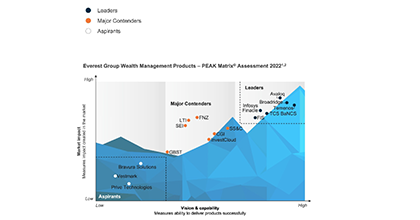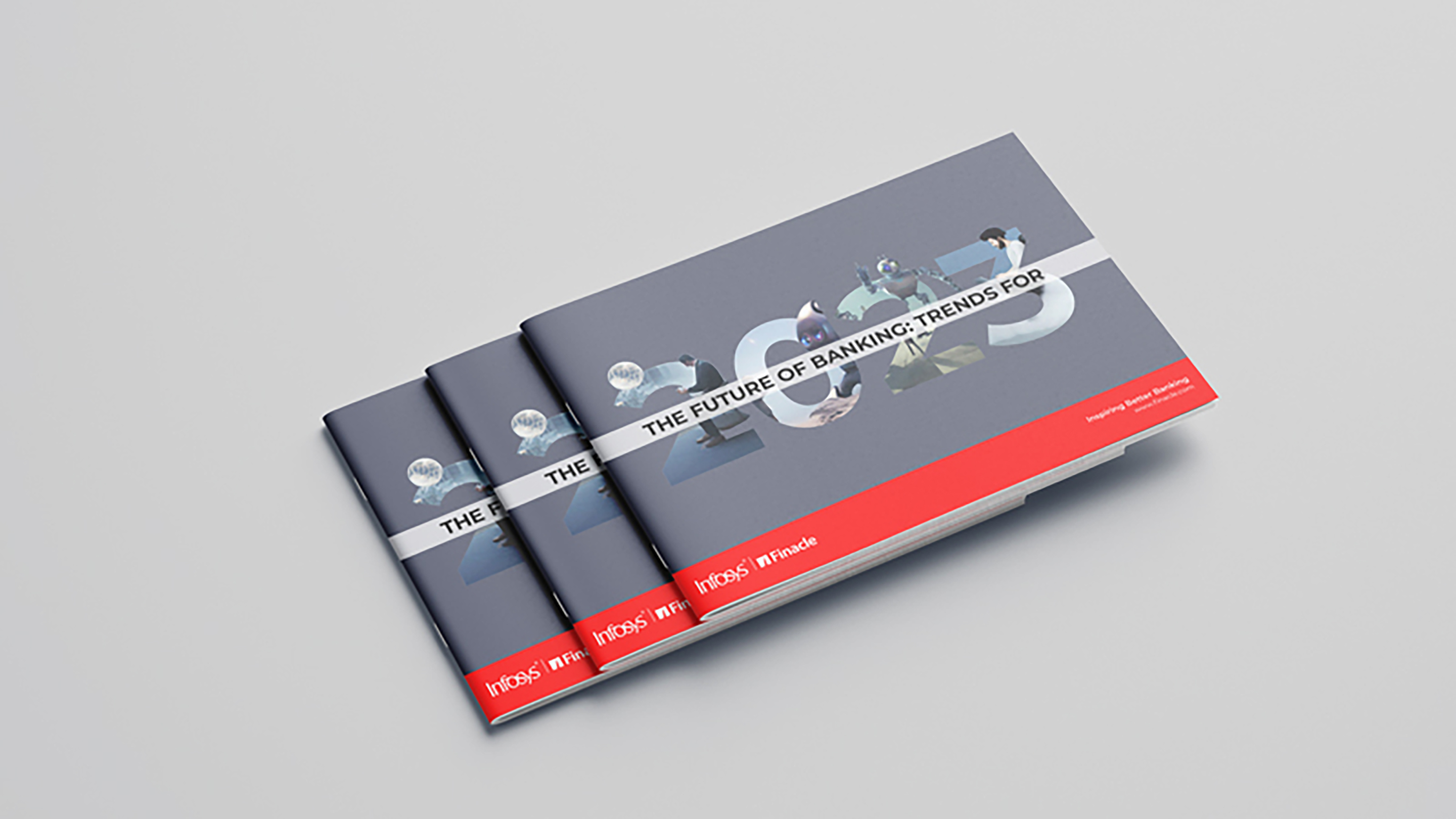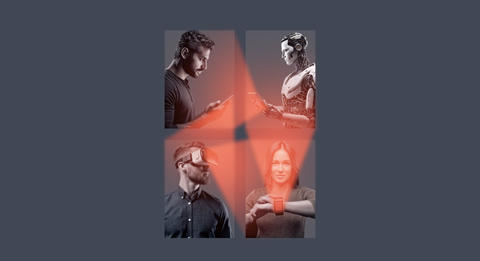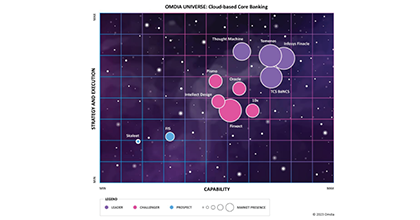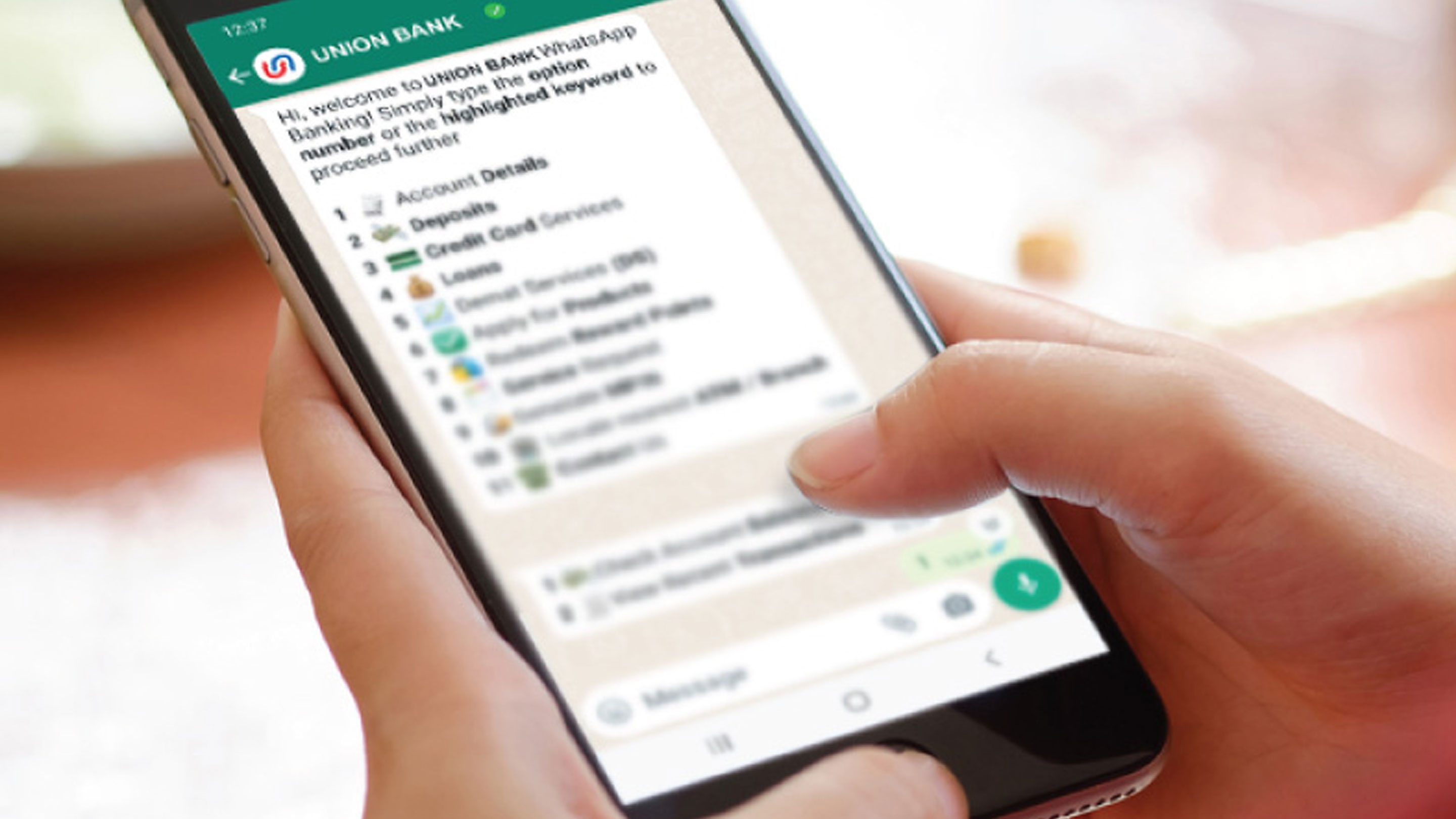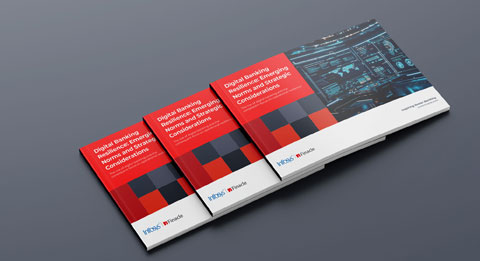-
![]() ESG in bankingESG-conscious banking should create new and future-proof value streams to build a sustainable and resilient business.Read More
ESG in bankingESG-conscious banking should create new and future-proof value streams to build a sustainable and resilient business.Read More -
![Everest Group PEAK Matri Everest Group PEAK Matri]() Everest Group PEAK MatrixA comprehensive solution delivering a full spectrum of wealth products as great experiences. It also improves the productivity of financial advisors and streamlRead More
Everest Group PEAK MatrixA comprehensive solution delivering a full spectrum of wealth products as great experiences. It also improves the productivity of financial advisors and streamlRead More -
![]() Subsidiary of an American Bank in IndonesiaFind out how a leading American bank adapts to a digitalized trade and supply chain finance operations as a part of its larger transformation by leveraging Finacle Trade Finance Solution Suite.Read More
Subsidiary of an American Bank in IndonesiaFind out how a leading American bank adapts to a digitalized trade and supply chain finance operations as a part of its larger transformation by leveraging Finacle Trade Finance Solution Suite.Read More
-
![]() Recomposing Banking: Leading the Digital ContinuumReport gives you a glimpse of the major areas where recomposing banking will create significant impact and value, Infosys Finacle has put together a report on..Read More
Recomposing Banking: Leading the Digital ContinuumReport gives you a glimpse of the major areas where recomposing banking will create significant impact and value, Infosys Finacle has put together a report on..Read More -
![]() Core Banking on Cloud: Navigating to the Fast LaneTake a deep dive into cloud-based core banking and explore the imperatives, opportunities and challenges, and the hallmarks of a robust solution.Read More
Core Banking on Cloud: Navigating to the Fast LaneTake a deep dive into cloud-based core banking and explore the imperatives, opportunities and challenges, and the hallmarks of a robust solution.Read More -
![]() Embracing Payments ComposabilityA step-by-step guide for maximizing Real Time Payment opportunities by embracing Payments Composability...Read More
Embracing Payments ComposabilityA step-by-step guide for maximizing Real Time Payment opportunities by embracing Payments Composability...Read More
-
![]() Shaping Banking’s Next: Banking Technology Trends for 2025 and BeyondThe banking industry has been balancing disruption and opportunity for several years now, and the pace of change shows no signs of slowing as we move into 2025 and beyond.Read More
Shaping Banking’s Next: Banking Technology Trends for 2025 and BeyondThe banking industry has been balancing disruption and opportunity for several years now, and the pace of change shows no signs of slowing as we move into 2025 and beyond.Read More -
![]() Virtual Accounts 2.0: Surpass Conventional Cash Management and Unlock Next-Gen PossibilitiesVirtual Account Management was a groundbreaking shift in the banking landscape, revolutionising use cases like cash concentration, pooling, centralised treasury management, and in-house banking (POBO, ROBO, COBO)Read More
Virtual Accounts 2.0: Surpass Conventional Cash Management and Unlock Next-Gen PossibilitiesVirtual Account Management was a groundbreaking shift in the banking landscape, revolutionising use cases like cash concentration, pooling, centralised treasury management, and in-house banking (POBO, ROBO, COBO)Read More -
![]() Unlocking Hybrid CloudAs banks push forward with their digital transformation agenda, cloud serves as a pivotal enabler. Each bank, at varying stages of adoption, crafts its unique path, dictated by context, regulations, and risk appetite.Read More
Unlocking Hybrid CloudAs banks push forward with their digital transformation agenda, cloud serves as a pivotal enabler. Each bank, at varying stages of adoption, crafts its unique path, dictated by context, regulations, and risk appetite.Read More
-
![]() Banking on CloudThis report from Infosys Finacle delves into the need for accelerating cloud adoption, highlights the current state of the industry, and puts forth key recommenRead More
Banking on CloudThis report from Infosys Finacle delves into the need for accelerating cloud adoption, highlights the current state of the industry, and puts forth key recommenRead More -
![]() Omdia Universe | Cloud-based Core BankingIn the report, Omdia highlights the following key capabilities of leading cloud-based core banking providers:Read more
Omdia Universe | Cloud-based Core BankingIn the report, Omdia highlights the following key capabilities of leading cloud-based core banking providers:Read more
-
![]() Emirates NBDEmirates NBD consolidates its operations on a single version for scalability, agility, and standardization.Read More
Emirates NBDEmirates NBD consolidates its operations on a single version for scalability, agility, and standardization.Read More -
![]() A Global Top 5 BankDiscover how a global top 5 bank headquartered in the US accelerated payments transformation.Read More
A Global Top 5 BankDiscover how a global top 5 bank headquartered in the US accelerated payments transformation.Read More -
![]() Union Bank of IndiaUnion Bank of India launches Union Virtual Connect (UVConn) by leveraging WhatsApp to provide customers personalized banking services.Read More
Union Bank of IndiaUnion Bank of India launches Union Virtual Connect (UVConn) by leveraging WhatsApp to provide customers personalized banking services.Read More

How Can ChatGPT Help Banks Provide Personalized Banking Experience
Blogs
In the wake of the global COVID-19 pandemic, the financial services industry is in the throes of a digital renaissance. Banks and financial institutions invested heavily in adopting emerging technologies, such as Artificial Intelligence and Machine Learning, to improve “customer experience”, retain existing customers and attract millennial and GenZ customers.
Conversational banking has now become a prerequisite for all banks and financial institutions. It is not restricted to mere communication between financial institutions and their customers via text or chat but is much more than that. Today, conversational banking has come to mean a service that allows customers to interact with their banks easily, access banking services, avail timely assistance to fulfil their banking/financial needs and receive personalized financial advice.
The online communication channels that are commonly used include chats, text, voice messaging and AI-powered chatbots. Therefore, conversational banking is personalized, streamlined and seamless, real-time, relevant, and consistent. The AI-powered chatbots use not just Artificial Intelligence but also use Machine Learning and Natural Language Processing. This enables these chatbots to have smart and relevant “two-way conversations” with the banks’ customers, besides solving their basic banking problems.
Banks use chatbots and other messaging services to interact with customers, through their specific apps. However, no transactions are possible, as it is not interlinked to the banking system. It functions as a standalone function. It is possible to interact with the banks using chatbots, virtual assistants, and other interactive technologies in a format that is very close to natural language conversations. This is an improvement over the present customer interactions with the bank, including inperson and phone banking.
Moreover, with the millennials and GenZ being digitally savvy and wealth moving into their hands, banks and financial institutions need to invest in digital features that will attract this cohort. According to Cornerstone Advisors’ What’s Going on in Banking 2023, 25 percent of the 300 community-based financial institution executives said they were three-quarters or more done with their digital transformation efforts, while 29 percent said they had deployed chatbots. With more investment happening in the digital transformation sphere, chatbots will likely evolve to become customers’ “intelligent digital assistants”.
GPT-3 – The Hottest Buzzword
GPT or Generative Pre-trained Transformer is the hottest buzzword in the field of AI, specifically, in Natural Language Processing. GPT is a largescale Machine Learning model that uses deep learning techniques to support natural language conversations, suitable to a context and time. GPT-3 is the third iteration of the GPT language model, originally developed by OpenAI. GPT-3 uses past data and redictive analytics to enable conversational interactions.
It can mine internet data (small-sized text/pictures/videos) and generates large volumes of contextually relevant text/pictures/videos. It can perform various tasks, such as translating text from one language to another, writing songs/ poems, creating a new picture, creating new text/story, and even generating software code. This works on the sampling methodology and therefore, the larger the model or sampling size, the more accurate and sophisticated the conversation or interaction between the GPT-3 Chatbot and customer is likely to be.
When it was first released in 2018, GPT had 117 million parameters. Today, per the model sizes, GPT-3 has 175 billion parameters, which help the tool analyze relevant data. GPT-3 175B identifies patterns and associations, and studies the relevance of data contextually to help the conversational interface between itself and its customers. It works over different layers to develop a model. Each layer is an improvement over the previous one and the most recent layer will be the most intelligent at that point in time.
It is possible to edit in this model, i.e., remove any layer, insert/add another layer. This improves the ability of the model to serve at its optimum. Based on examples, GPT-3 can develop associations of various inputs and generate text-like sentences, passages, paragraphs, new songs, and pictures. It can also identify patterns and associated words/objects with each other. Thus, when asked to generate a sentence, passage, or song, based on the input training data, the output will seem as if it has been “created” by a human.
Click here to read more about ChatGPT and how it could help banks cut cost and provide more personalized customer experience.



©2025 -Edgeverve Systems Limited | All rights reserved

